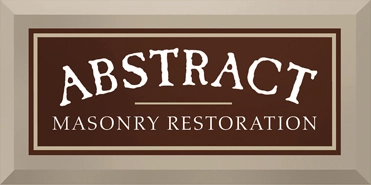Having a low-maintenance home and yard is a dream for many renters and homeowners. When it comes to your home’s exterior, vinyl may be the lowest-maintenance material. But what about different stones or bricks?
What’s Considered Masonry Materials
When it comes to masonry, the most common building materials for buildings and walls include:
- Adobe
- Brick
- Cast Stone
- Concrete Block
- Granite
- Limestone
- Marble
Climate will often determine which material is best when it comes to longevity and maintenance needs. In Utah, we experience both extremely hot and extremely cold temperatures, so selecting low-maintenance masonry varies depending on where you’re located.
Best Masonry Materials for Cold Climates
In Northern and Central Utah, your masonry has to withstand some pretty cold temperatures. This means your building materials need to be able to expand and contract as moisture levels and the weather change.
Abstract Masonry recommends considering brick, stone, and concrete for your home, office building, or hardscaping needs in colder climates.
WHY CHOOSE BRICK
Brick is fairly inexpensive, and it’s incredibly durable. Plus, it’s easy to clean and can be easy to repair in the event it’s damaged. Since Utah weather fluctuates drastically, brick is a good choice for both cold and hot temperatures. In cold weather, brick can actually act as an insulator by absorbing thermal heat during the day and retaining it after the sun goes down.
As long as you have the right mortar between your bricks, it can usually hold up to absorbing moisture and freezing in cold weather. Here are other ways you can prolong the life of your brick with little effort:
- Keep brick walkways clear of anything that will trap moisture (yard debris, woodpiles)
- Don’t stack things next to exterior brick walls (i.e. prevent trapping moisture in the walls)
- Use magnesium chloride to de-ice brick pathways (vs rock salt) to prevent mortar deterioration
WHY CHOOSE STONE
Not only is stone beautiful, but it’s durable as well. Like brick, it can serve as an insulator. Unlike brick, stone building materials tend to last longer. In a cold climate, quarried or rough-cut stone are the best choices for retaining thermal heat. To prolong the life of your stone materials, consider having it sealed, and have it cleaned annually to remove buildup that could damage the mortar or the stone itself.
WHY CHOOSE CONCRETE
Concrete, or cinder, blocks tend to absorb less moisture than brick, making them a good choice for cold-weather climates. Being larger than brick and more uniform than stone, they can also be more convenient, efficient, and cost-effective to work with. Concrete can be reinforced with rebar, which makes it more structurally sound and less prone to damage.
Like brick, concrete is fairly easy to care for. Keep it clear of debris and vegetation to prevent moisture retention. If you have to use a de-icer on exterior concrete pathways, consider using sand to prolong the life of your surface. You can also increase your concrete’s resilience by having it sealed.
Best Masonry Materials for Warm Climates
Luckily, brick and concrete are not only good choices for low-maintenance building materials in cold climates, but in hot climates as well. In addition to these options, stucco is a good pick for your home or office exterior.
WHY CHOOSE STUCCO
In Southern Utah, it’s more consistently dry and hot. Stucco not only complements the aesthetic of the locale, but withstands the climate as well. Stucco can be stained or painted to further protect it from the elements, helping it last longer with little effort. Like other building materials, stucco can benefit from an annual rinse and a gentle scrub to remove buildup.
Other Low Maintenance Materials and How to Use Them
To give you peace of mind regarding other aspects of your house, consider some of the following options when it comes to roofing, siding, trim, and more.
ROOFING MATERIALS
Clay, concrete, and slate can last up to 100 years when used properly for a roof. One style may fit your building’s aesthetic better than another, but there are budget-friendly options for all.
SIDING MATERIALS
In addition to brick, stone, and concrete, fiber cement siding is a durable, low-maintenance option. It could last up to 75 years, and you could have it installed in the form of clapboards or shakes.
STAIR MATERIALS
If you have stairs as part of your hardscaping or your entryway, concrete, stone, and brick are materials that can withstand high traffic and whatever the weather throws at them. Keeping the area clean and sealed could mean you have anywhere from 50 to 100 years of life expectancy from the materials.
DECKING AND PORCH MATERIALS
While wood is a popular choice for a deck or a front porch, it can be expensive and require a lot of maintenance. Pouring concrete, laying bricks, or installing stone pavers to create outdoor living spaces can be lower maintenance and cost less.
Choosing the right materials for your climate will make a big difference when it comes to the amount of care they’ll require.
For tips on cleaning and preserving historic masonry, check out our blog article HERE. If you need any more insight on caring for masonry, don’t hesitate to get in touch with Asbract Masonry today.
